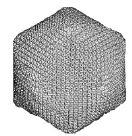Plant Pathology, Department of

James Van Etten Publications
Document Type
Article
Date of this Version
11-2016
Citation
PNAS Early Edition (Nov. 2016)
www.pnas.org/cgi/doi/10.1073/pnas.1613843113
Abstract
Virus population growth depends on contacts between viruses and their hosts. It is often unclear how sufficient contacts are made between viruses and their specific hosts to generate spikes in viral abundance. Here, we show that copepods, acting as predators, can bring aquatic viruses and their algal hosts into contact. Specifically, predation of the protist Paramecium bursaria by copepods resulted in a >100-fold increase in the number of chloroviruses in 1 d. Copepod predation can be seen as an ecological “catalyst” by increasing contacts between chloroviruses and their hosts, zoochlorellae (endosymbiotic algae that live within paramecia), thereby facilitating viral population growth. When feeding, copepods passed P. bursaria through their digestive tract only partially digested, releasing endosymbiotic algae that still supported viral reproduction and resulting in a virus population spike. A simple predator–prey model parameterized for copepods consuming protists generates cycle periods for viruses consistent with those observed in natural ponds. Food webs are replete with similar symbiotic organisms, and we suspect the predator catalyst mechanism is capable of generating blooms for other endosymbiont-targeting viruses.
Movie file (.mp4) attached below.
4-minute movie of copepod eating Paramecium bursaria and defecating the pieces


Comments
Freely available online through the PNAS open access option.